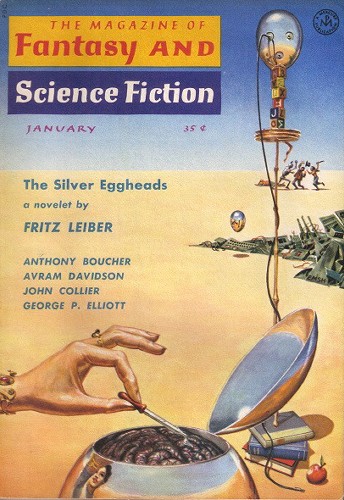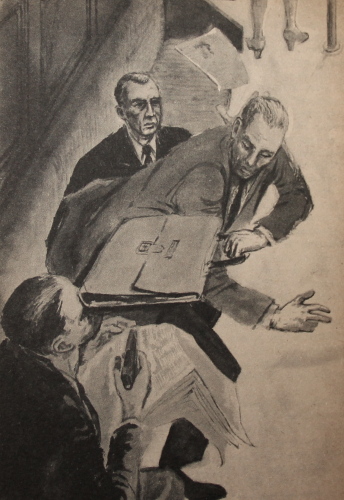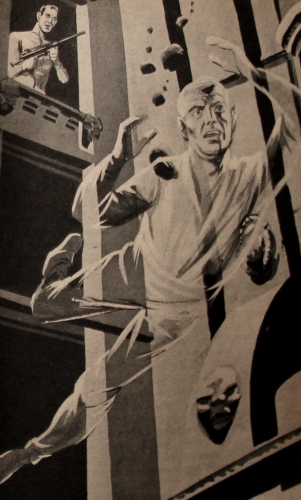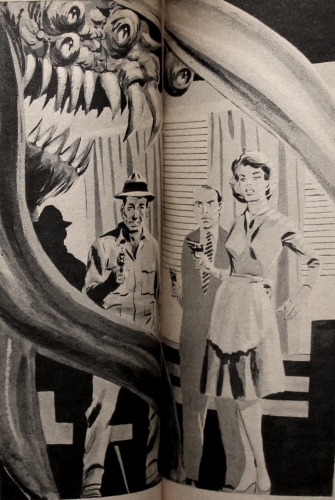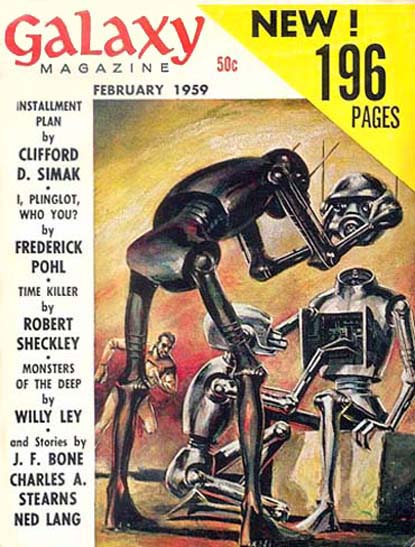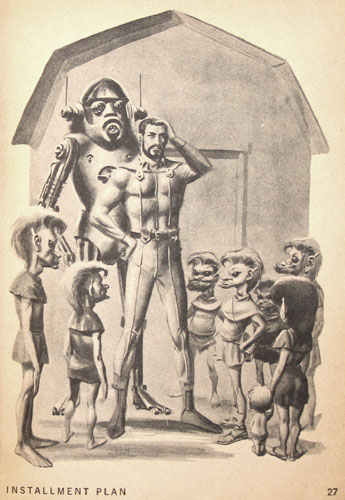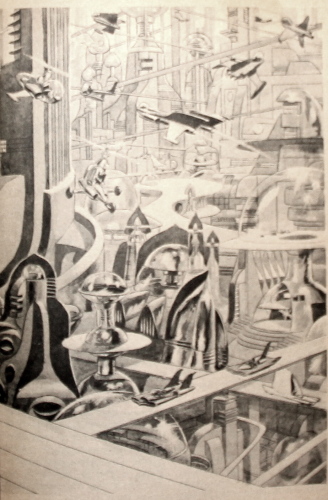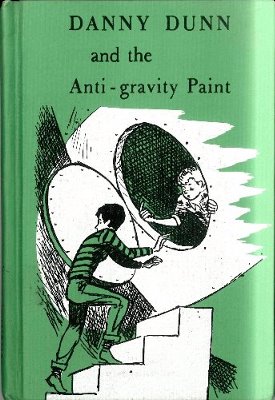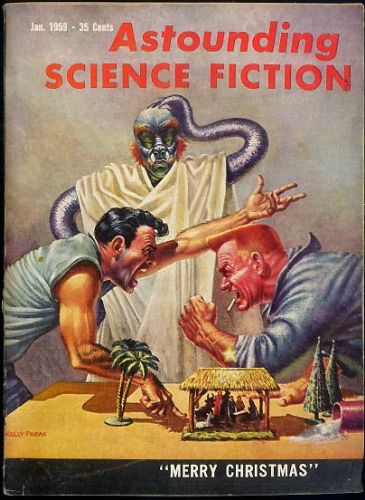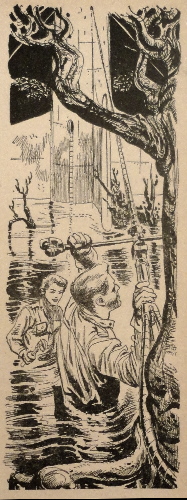I tried. I really tried.
When last we left off, I had saved Fritz Leiber's The Silver Eggheads for last. It comprises a good third of the January F&SF, and I thought it would be worth an article all to itself. I suppose it does, at that, but not the way I had thought.
For some reason, when I started this project, I'd had the impression that I liked Fritz Leiber. I think it was from reading The Big Time, which was pretty good. Thus my puzzlement when I reviewed "Number of the Beast", and again when I reviewed "Poor Little Miss MacBeth.".
I am now coming to realize that I don't like Fritz Leiber. The Silver Eggheads was yet another of his over written yet frivolous stories. I know Fritz has won the Hugo, and I haven't published any fiction since I was 14 (so what do I know?), but his latest novella was execrable.

Here's the plot. I think. In the future, fiction is turned out by sentient computers. The fiction-bots are destroyed by disgruntled writers (in the future, human writers don't actually compose; they just tend the machines), but then are unable to come up with their own stories. The glib explanation is that people are insufficiently educated in the future to write. This makes no sense–if the primary form of entertainment in the future is reading, how can it be impossible to know how to write, even if in a mediocre fashion?
And there are these silver eggs that are apparently the brains of dead writers. And there is a whole species of robots with their own culture and even genders (but who act just like people–a typical sin of contemporary writers). And the whole thing is written in this baroque mess that is as much fun to read as stabbing forks into my eyes, with that same casual Playboy Magazine glib disdain of women that I've come to expect from Mssrs. Anderson and Garrett.
So, I tried. I really tried. But I could not get past the 16th page without skimming. I have failed you. I present myself prostrate and ask forgiveness. Or vindication, whichever may be appropriate.
The rest of the issue fares little better. John Collier's Meeting of Relations is a slight, biblically-inspired piece. It is also 16 years old; its reprinting suggests it was picked based on length rather than quality.
Invasion of the Planet of Love, by George P. Elliott, is another one of those strange pieces that leaves me wondering if it supposed to be satire or not. I suspect it is, because the subject (rapacious Victorian-types looting and torturing Venus and its inhabitants only to be thwarted by the most peaceful of peoples) is implemented in so heavy-handed a fashion that it must have been meant as some kind of allegory. It's certainly not science fiction, at least no more than Burroughs' work at the turn of the century.
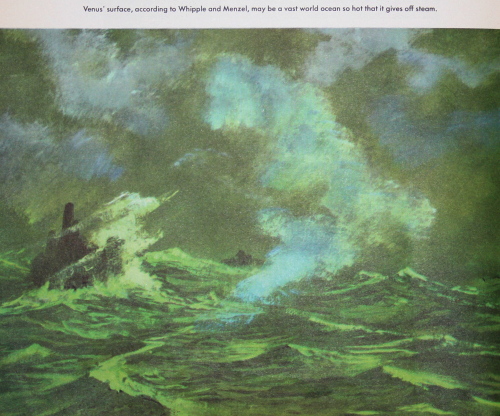
From Exploring the Planets Copyright 1958
Incidentally, it is looking as though the "hot but tolerable" Venus is about to go by the wayside (along with all the science fiction stories that take place on it). A presentation at the Paris Symposium on Radio Astronomy last summer revealed that radar studies done a few years ago show that Venus may be extremely hot–well above the boiling point of water. I have a suspicion that most of our treasured science-fiction themes may well be rendered obsolete in the next few years of space exploration.
Wrapping up the magazine is The R of A by Gordon Dickson. It's another in a long line of wish-granting genie stories and an interesting commentary on predestination. Not great, but not bad.
That leaves the score for this magazine at one third 4-star, one third 2-star, and one third 1-star. This leads to an average of 2.33. And things started out so well. On the other hand, the nice thing about digests is you can pick and choose.
Next article: 43,000 Years Later by Horace Coon. Stay tuned!
(Confused? Click here for an explanation as to what's really going on)
This entry was originally posted at Dreamwidth, where it has comments. Please comment here or there.


